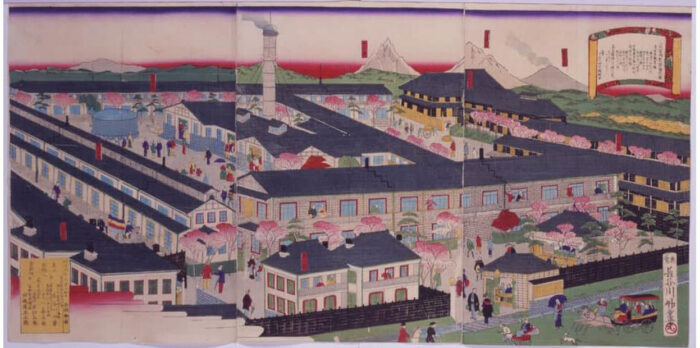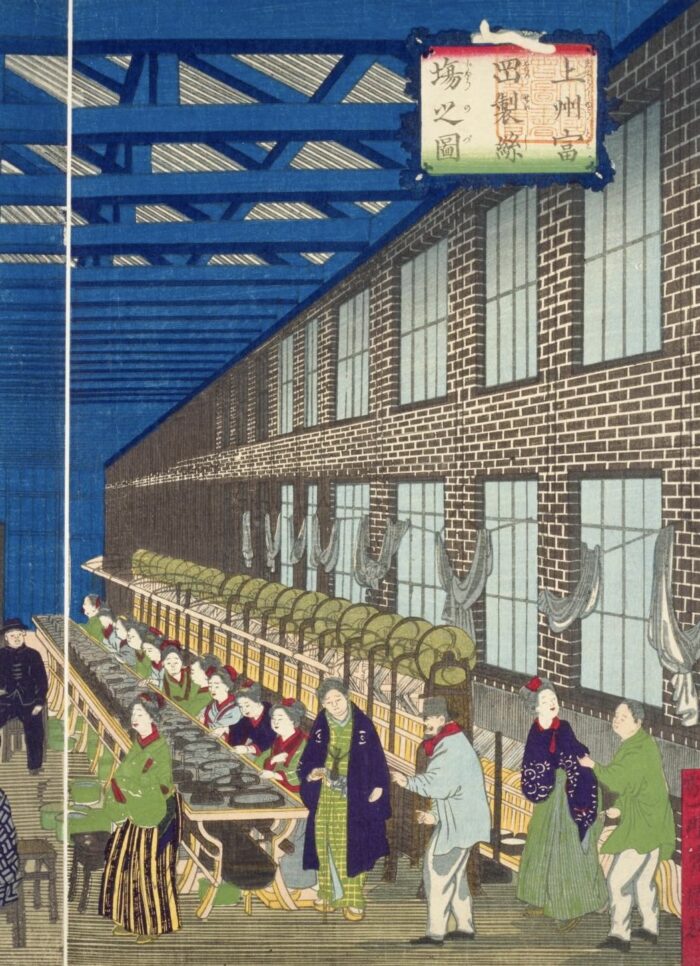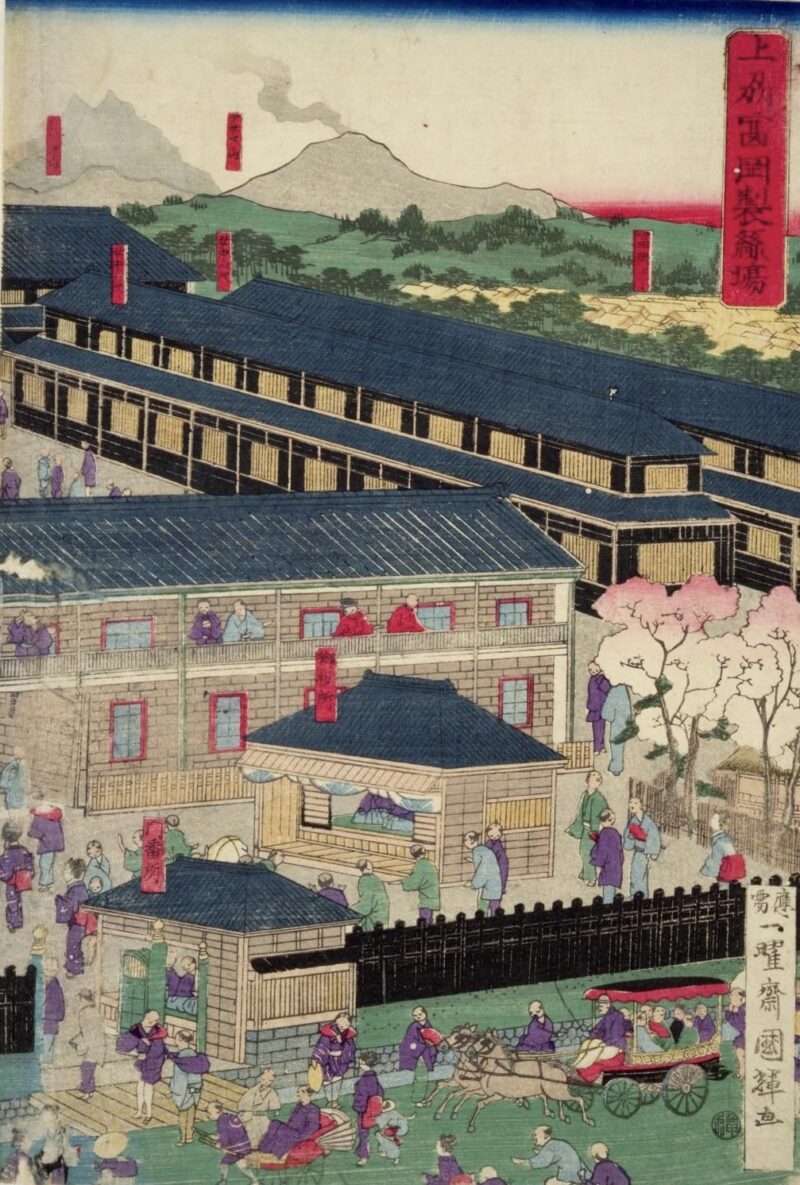The National Yarn Factory was established in Tomioka, Gumma in 1872. It is the Japanese first full-scale machine spinning factory.

The Meiji state had begun to put in place the infrastructure of a capitalist industrial economy by the early 1880s. Then, in the two decades spanning the turn of the century, Japan’s industrial economy took off. Manufacturing output rose 5 percent annually over these years. This was a much stronger performance than the worldwide annual growth rate of 3.5 percent. Japan’s production even outpaced that of the United States, where industry was also booming. Industrialization was led by the textile industry.


In the middle of the 19th century, what European markets were looking for in Japan was raw silk. The epidemic had temporarily destroyed the European silkworm industry. However, when the epidemic settled down, the quality of raw silk in Japan became a problem. Since it was difficult to build factories with private capital at the time, the government decided to build government-operated model factories with Western silk-reeling machines to improve quality, increase production, and train engineers. Frenchman Paul Brunat was employed, and under his direction, the government-operated model silk mill incorporating Western technology (Tomioka Silk Mill) was established. Tomioka was chosen as the construction site because it met all the conditions, including the fact that sericulture is thriving in the area and the raw material, cocoons, could be procured, a large factory site was available, water for silk reeling was available, lignite needed for power could be obtained nearby, and the consent of local people to construction was obtained. Tomioka is close to Isesaki and Ashikaga, which became industrial cities of the Meisen.
The construction of Tomioka Silk Mill began in 1871 based on the plans by Paul Brunat. By July 1872, the main buildings had been completed, and the operations began on October 4. Trained female workers from around the country worked in the Silk-Reeling Plant where silk was reeled off of cocoons, and full-scale machinery silk reeling began. After foreign directors left in 1876, it was operated only by the Japanese people. Once the original purpose to spread machinery silk-reeling and to train engineers was satisfied, the mill was sold to the Mitsui Conglomerate in 1893.
